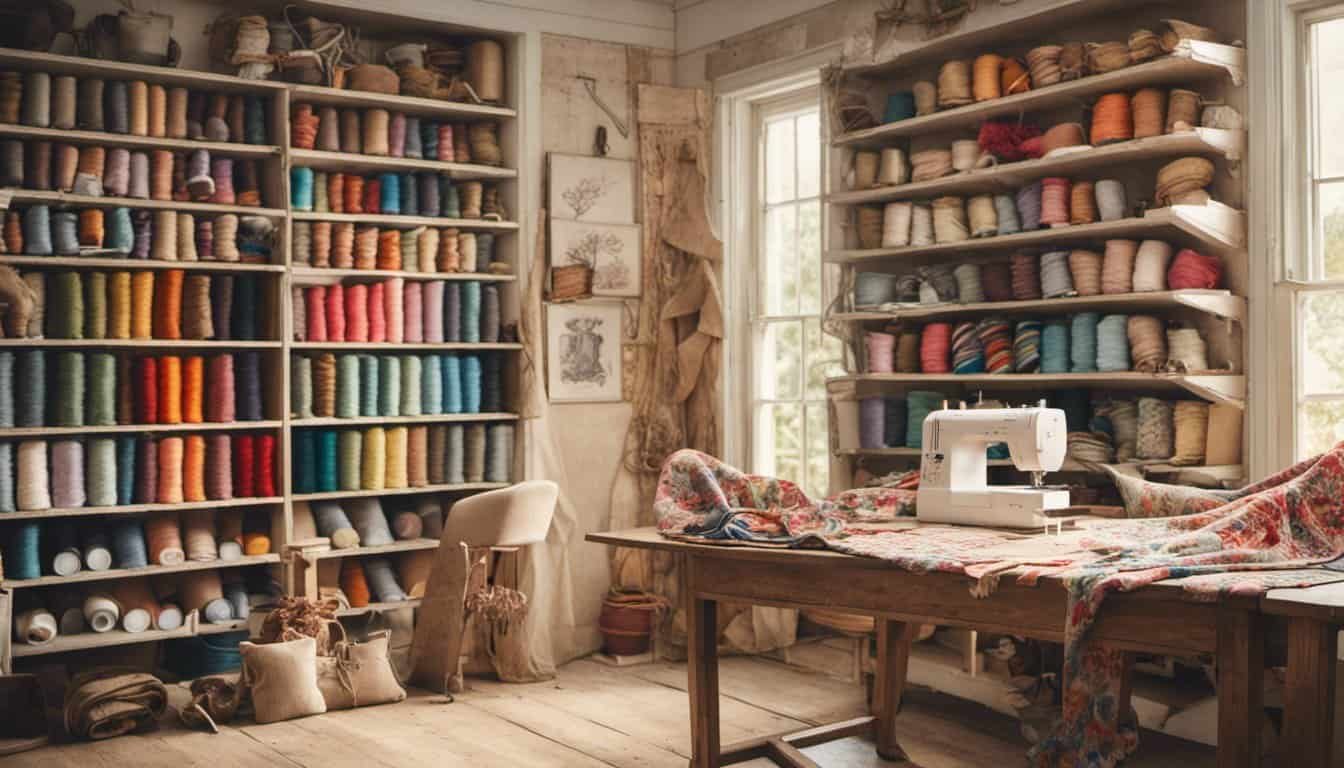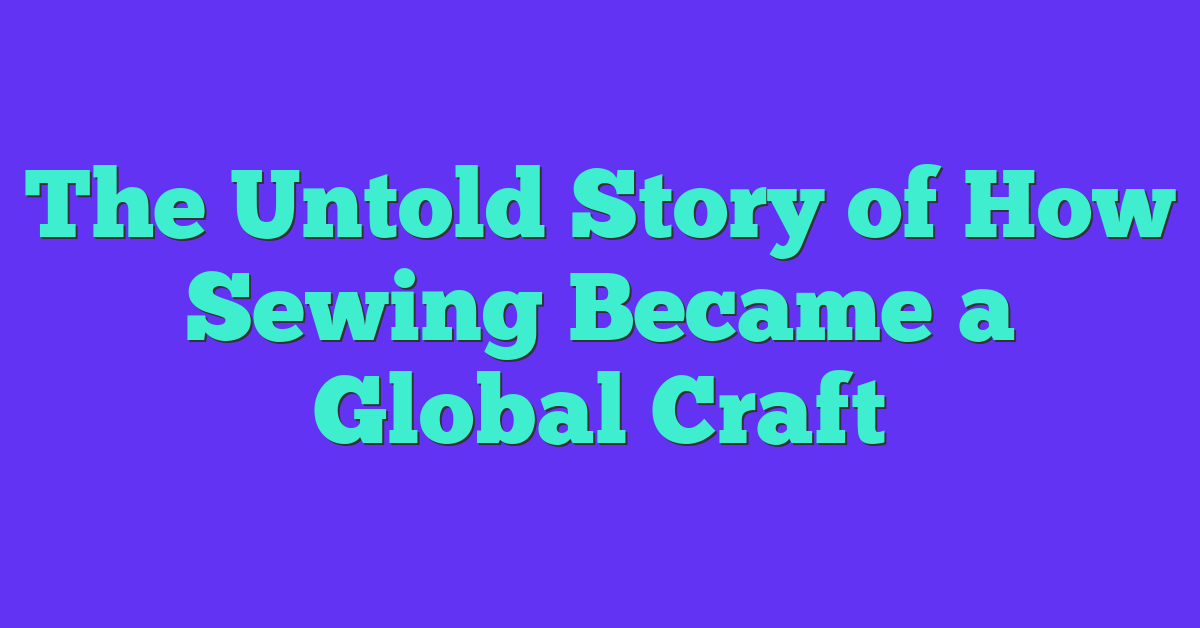Have you ever thought about introducing your kids to sewing while also teaching them about sustainability? Eco sewing projects are a fantastic way to blend creativity with environmental consciousness.
With simple materials and fun ideas, you and your children can create unique items that are both useful and eco-friendly. From upcycling old clothes to making reusable tote bags, these projects not only spark their imagination but also instill important values about reducing waste.
Whether you’re a seasoned sewer or just starting out, these activities are perfect for spending quality time together and making a positive impact on our planet.
Benefits Of Eco Sewing Projects For Kids
Engaging in eco sewing projects offers numerous advantages for children, fostering both personal growth and environmental awareness.
Enhances Creativity and Problem-Solving Skills
Sewing encourages kids to think creatively, designing unique items from recycled materials. They learn to solve problems, such as adjusting patterns or repurposing fabrics, which strengthens their critical thinking abilities.
Promotes Environmental Responsibility
By using upcycled materials, children understand the importance of reducing waste. They actively participate in conservation efforts, learning to appreciate the value of sustainable practices and the impact of their actions on the planet.
Develops Fine Motor Skills
Handling needles, threads, and fabrics improves children’s dexterity and hand-eye coordination. These fine motor skills are essential for various daily tasks and contribute to overall physical development.
Builds Confidence and Sense of Accomplishment
Completing a sewing project gives kids a tangible sense of achievement. Successfully creating something with their hands boosts self-esteem and encourages them to take on new challenges with confidence.
Encourages Patience and Persistence
Sewing requires attention to detail and dedication. Children learn to be patient as they work through each step of a project, fostering persistence and the ability to see tasks through to completion.
Facilitates Quality Family Time
Eco sewing projects provide opportunities for families to collaborate on creative endeavors. This shared activity strengthens bonds, enhances communication, and creates lasting memories.
Introduces Basic Financial Literacy
Reusing materials teaches kids about resourcefulness and the cost-effectiveness of upcycling. They gain an understanding of budgeting and the economic benefits of sustainable living.
Supports Educational Development
Sewing integrates lessons in mathematics, such as measuring and pattern calculation, as well as science concepts related to materials and sustainability. This multidisciplinary approach reinforces academic learning in a practical context.
Fosters a Sense of Community
Participating in eco-friendly projects can connect children with like-minded peers and community initiatives. They experience the value of collaborative efforts and the positive impact of working together towards common goals.
Essential Materials
Gathering the right materials ensures your eco sewing projects are both sustainable and enjoyable for your kids.

Sustainable Fabrics
Choose fabrics that minimize environmental impact and are safe for children. Organic cotton, made without harmful pesticides, offers softness and durability. Recycled fabrics, such as repurposed denim or upcycled cotton, reduce waste by giving new life to old materials. Tencel and bamboo fabrics provide eco-friendly alternatives with their renewable sources and biodegradable properties. Selecting these sustainable fabrics supports eco-conscious practices and teaches kids the importance of responsible material choice.
Eco-Friendly Threads
Opt for threads that complement your sustainable fabrics and maintain eco integrity. Organic cotton threads are biodegradable and free from toxic chemicals, making them safe for both the environment and your children. Recycled polyester threads, derived from post-consumer plastic bottles, offer durability while reducing plastic waste. Natural fibers like linen or hemp threads provide strength and a natural sheen, enhancing the quality of your projects. Using eco-friendly threads ensures your sewing projects remain environmentally responsible from start to finish.
Creative Project Ideas
Explore these engaging eco sewing projects to spark your child’s creativity and environmental awareness.
Recycled Tote Bags
Create sturdy, reusable tote bags using old t-shirts or fabric scraps.
- Materials Needed:
- Old t-shirts or recycled fabric
- Scissors
- Needles and eco-friendly thread
- Steps:
- Cut Fabric: Slice the t-shirt into two equal rectangles for the bag’s front and back.
- Sew Sides: Align the rectangles and stitch the sides together, leaving the top open.
- Add Handles: Use fabric strips to create handles, sewing them securely to the bag.
- Decorate: Let your child personalize the tote with fabric markers or patches.
- Benefits:
- Sustainability: Repurposes unused clothing
- Skill Development: Enhances basic sewing techniques
- Practical Use: Provides a functional item for daily use
Fabric Scrap Animals
Transform leftover fabric scraps into adorable animal plushies.
- Materials Needed:
- Various fabric scraps
- Sewing needles or a child-friendly sewing machine
- Polyester stuffing
- Safety eyes or buttons
- Steps:
- Choose Animal: Select an animal to create, such as a bear or rabbit.
- Cut Shapes: Trace and cut out the animal’s body parts from fabric scraps.
- Sew Pieces: Assemble and sew the pieces together, leaving an opening for stuffing.
- Add Details: Insert stuffing and attach safety eyes and other features securely.
- Final Touches: Close the opening with neat stitches, completing the plushie.
- Benefits:
- Creativity: Encourages imaginative design
- Motor Skills: Improves hand-eye coordination
- Emotional Growth: Fosters a sense of accomplishment
Getting Started With Eco Sewing
Choose Sustainable Materials
« Unlock the Secrets of Bamboo Fabric: Ultimate Guide to Sewing It Perfectly
Latest Sewing Trends for 2025: What’s Hot – You Won’t Believe These Style Shifts »
Opt for organic cotton, recycled fabrics, or bamboo textiles as your primary materials. These fabrics reduce environmental impact and are safe for children. For example, use old t-shirts for tote bags or scrap fabric to create plush toys.
Gather Essential Tools
Collect child-friendly sewing tools to ensure safety and ease of use. Essential tools include:
- Safety Scissors: Blunt-tipped for little hands.
- Needles: Large-eye needles for easier threading.
- Thread: Organic cotton or recycled polyester threads.
- Sewing Machine: A simple, user-friendly model if you choose to sew with a machine.
Set Up a Comfortable Workspace
Create a designated sewing area that’s organized and accessible for kids. Ensure good lighting and enough space to spread out materials. Use storage bins to keep fabrics and tools within reach, making the sewing process enjoyable and efficient.
Teach Basic Sewing Techniques
Introduce fundamental skills to build confidence and competence. Start with:
- Stitching: Practice simple straight and zigzag stitches.
- Cutting Fabric: Demonstrate how to measure and cut materials accurately.
- Threading Needles: Show how to thread needles safely and securely.
Select Age-Appropriate Projects
Choose projects that match your child’s skill level and interests. Simple projects like:

- Recycled Tote Bags: Easy to sew and useful for daily activities.
- Fabric Scraps Plush Toys: Encourages creativity and motor skills.
- Drawstring Pouches: Practical and straightforward to assemble.
Incorporate Learning Opportunities
Integrate educational elements into sewing projects to enhance learning. Use sewing as a way to teach:
- Math Skills: Measuring fabric and calculating dimensions.
- Environmental Awareness: Discuss the importance of recycling and sustainability.
- Creative Thinking: Design unique patterns and customize projects.
Ensure Safety and Supervision
Maintain a safe sewing environment by supervising children closely. Teach them to handle tools properly and be aware of potential hazards. Provide guidance to prevent accidents and encourage responsible sewing practices.
Encourage Regular Practice
Foster a habit of sewing by scheduling regular project times. Consistent practice helps improve skills and keeps children engaged. Celebrate their progress and completed projects to build confidence and enthusiasm.
Utilize Online Resources and Tutorials
Take advantage of online guides and video tutorials tailored for kids. Websites like Craftsy and YouTube offer step-by-step instructions and visual aids that can support your child’s learning journey.
Join Sewing Communities
Connect with other families and sewing enthusiasts to share ideas and gain support. Participating in local workshops or online forums can provide inspiration and foster a sense of community around eco sewing projects.

Conclusion
Embarking on eco sewing projects with your kids is a fun way to nurture their creativity and teach them about sustainability. You’ll find joy in creating unique items together while making a positive impact on the environment. These projects offer more than just sewing skills; they build valuable life lessons and strengthen your bond as a family. Plus you’ll be setting the foundation for eco-conscious habits that your children will carry forward. Dive into the world of eco sewing and watch as your kids thrive through each colorful stitch and thoughtful creation.
















